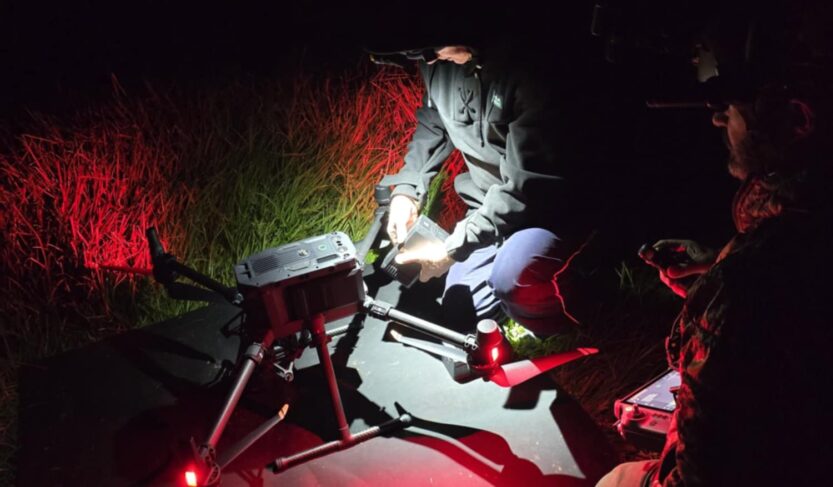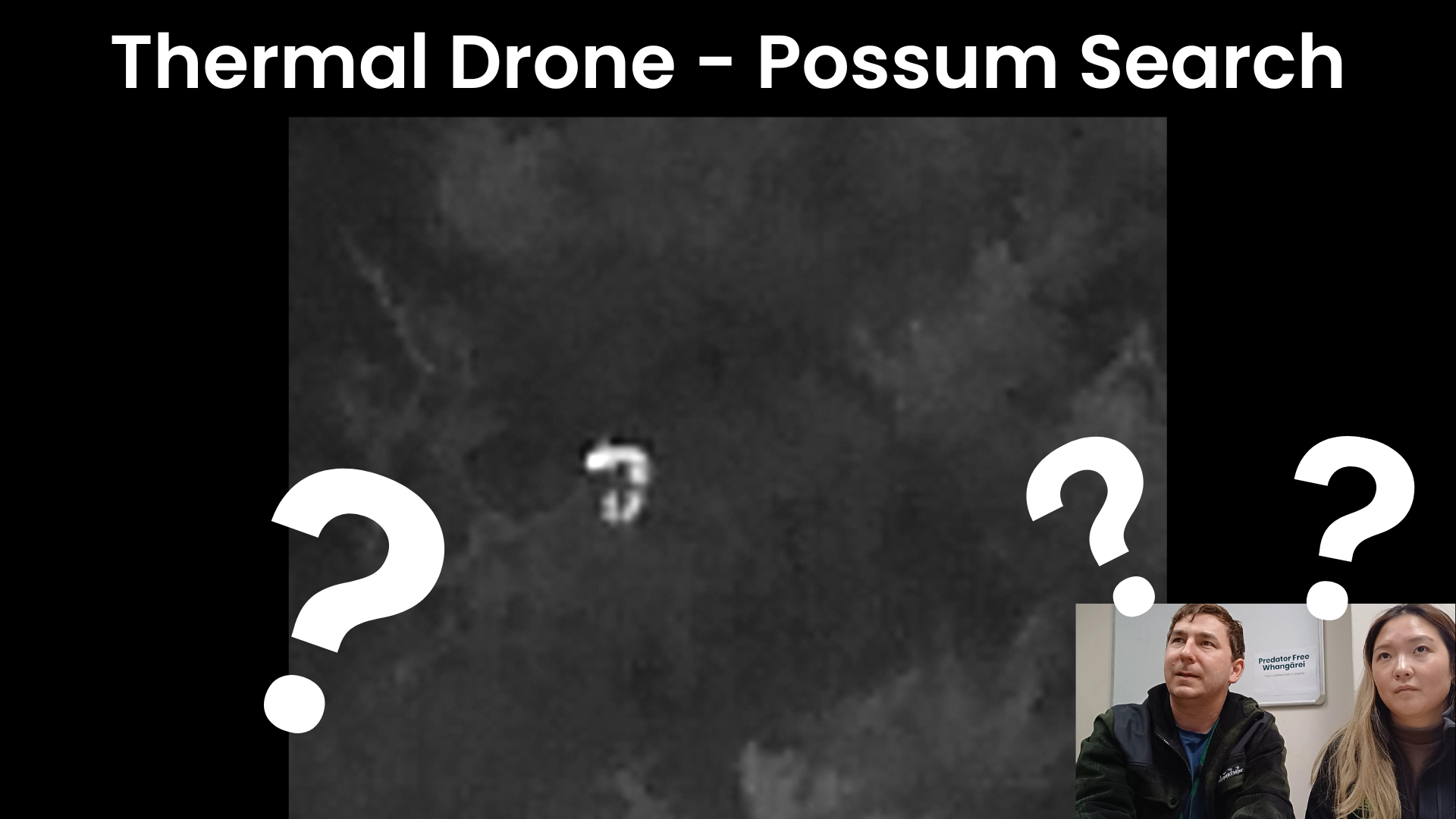Possum search with a thermal drone

This is where it gets exciting for mainland eradication projects! The Possum Free Whangārei Heads field team, backyard trappers, community groups, have been working hard on the ground and now it’s time to see how we’re doing on this journey towards zero possums.
A hi-tech thermal drone was flown by a specialised operator in areas that are in the ‘Detect and Respond’ phase, i.e., keeping possums out in cleared areas. Altogether, they covered around 2,000ha within around four hours of flying time. The data from this night will help build on the ‘Proof of Absence’ for the project.
It was flown over only in rural landscapes, up to 100m in height above the ground, and it operates much more discreetly than what we may be familiar with traditional drones.
Specialised thermal drones are just one of the many critical tools for this project, since possums spend a lot of time in burrows or on the ground. Other methodologies such as conservation dogs are key to this equation which can detect possum activity, which can help cross check each other’s detection data, too. Any landowner or resident out in the Whangārei Heads peninsula, from beyond Parua Bay, can report a possum using this tool via the website.
The result? No possums were detected around Taurikura and Bream Head areas, and a dozen possums or more on the Northern end of the Ocean Beach coastal strip, where control had not yet begun. The operator was surprised at the results, and seeing multiple kiwis was a bonus!
This was a good start to testing the proof of absence model in intensively controlled areas. After a baiting operation in the coastal strip, the team have begun working in Kauri Mountain, which has been an uncontrolled area and is known to be the possum hotspot. It was unsurprising to find possums in the northern end of the coastal strip, as they are suspected to be travelling down from Kauri Mountain.
The thermal drone technology was impressive in being able to identify smaller animals on the ground. You can watch some of the footage with an explanation from Operations Lead, Zac Coffin, on our Facebook page.
Click the image below to be directed to the video on our Facebook page.
23/08/2024
